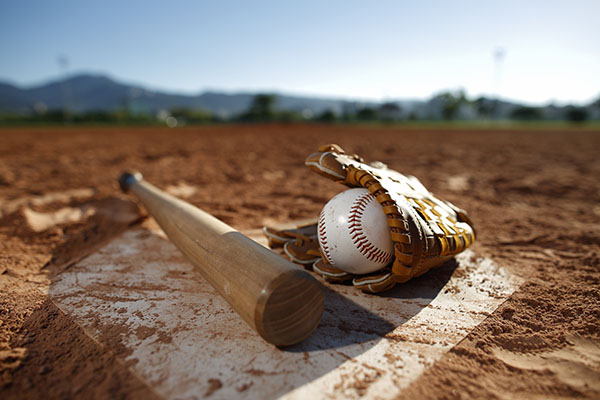An orthopedic surgeon’s advice on preventing baseball injuries
 Grab some peanuts and Cracker Jack, because March 28, 2024, marks opening day for Major League Baseball. The sport of baseball showcases athleticism, strategy and skill. However, amid the excitement of the game lies a spectrum of orthopedic injuries that challenge players and coaches alike.
Grab some peanuts and Cracker Jack, because March 28, 2024, marks opening day for Major League Baseball. The sport of baseball showcases athleticism, strategy and skill. However, amid the excitement of the game lies a spectrum of orthopedic injuries that challenge players and coaches alike.
In this Q&A session with Dinesh Dhanaraj, MD, Trinity Health Mid-Atlantic orthopedic surgeon, we’ll look at common baseball injuries, prevention strategies and the role that biomechanics, conditioning and workload management play in fostering optimal player health and performance.
What are the most common orthopedic injuries in baseball players, and what contributes to them?
Shoulder and elbow injuries are the most common injuries seen in baseball players, as it is an upper extremity throwing sport. Specifically, shoulder rotator cuff and labrum injuries are common as well as injuries to the ulnar collateral ligament (UCL) in the elbow. Most come from overuse, stemming from repetitive motions. Some injuries can even be traumatic due to poor throwing mechanics and deconditioning.
Can you outline some preventive measures or exercises that baseball players, especially pitchers, can incorporate into their training routines to minimize the risk of shoulder and elbow injuries?
Proper warm-up and stretching are always key to preventing sports injuries. A combination of both static and dynamic stretches is important for throwers. Cooling down and cool down stretching are often neglected but highly important as well. Focusing on techniques can prevent injuries associated with overuse and repetitive body movements. Finally, limit the amount of time one spent participating in a particular sport or motion (i.e., avoid year-round sports/pitch counts).
What are the warning signs of overuse injuries in young baseball athletes, and how can coaches and parents help identify and address them early on?
Pain is the most common sign of an overuse injury. However, players may not be able to recall the exact moment they experienced an injury or started feeling pain. Attention to other signs such as loss of velocity and throwing speed as well as increased fatigue are signs of injury and overuse. Proper communication between coaches, parents and players is important during early treatment and in injury prevention.
There has been an increasing emphasis on advanced pitching techniques like curveballs and sliders. What impact do these pitches have on the risk of elbow and shoulder injuries, and are there specific strategies for managing this risk?
Although some studies have shown increased rates of shoulder pain and elbow pain with ‘breaking’-type pitches, including curveballs and sliders, these increased rates are not uniform across all age groups. There tends to be a more cautious approach in younger athletes performing these types of pitches solely because improper technique leads to increasing forces at the wrist, medial elbow and shoulder. Proper technique in learning these pitches is paramount. Younger athletes may not have the hand size to achieve the proper grip to perform breaking pitches safely and correctly.
How do factors such as player biomechanics, conditioning and workload management influence the likelihood of sustaining common baseball-related orthopedic injuries, and what can be done to optimize these factors for injury prevention and performance enhancement?
There is a saying that “spring training is as old as baseball itself.” Strength and conditioning are key to any sport and imperative for injury prevention. This goes for any sport and was likely the rationale for spring training in the first place (that and warmer weather). Although throwing appears to be primarily an upper-extremity motion, core muscles are key in stabilizing the body while throwing. Therefore, core exercises and conditioning are key to throwing sports. The body is known as one “kinetic chain,” and even an unrehabilitated ankle sprain can affect this chain leading to poor velocity during throwing.
Baseball injuries are prevalent among players, primarily due to the sport’s repetitive throwing motions. However, by practicing preventive measures and exercises, players can minimize the risk of injury. Coaches and parents play pivotal roles in recognizing warning signs of overuse injuries in young athletes and facilitating early intervention. The goal is not only to prevent injuries in the first place, but also to enhance the athlete’s performance on the field and ensure a healthy and fulfilling baseball experience for all involved.
Are you experiencing pain or not living your best life? Request an appointment with an orthopedic specialist today.
